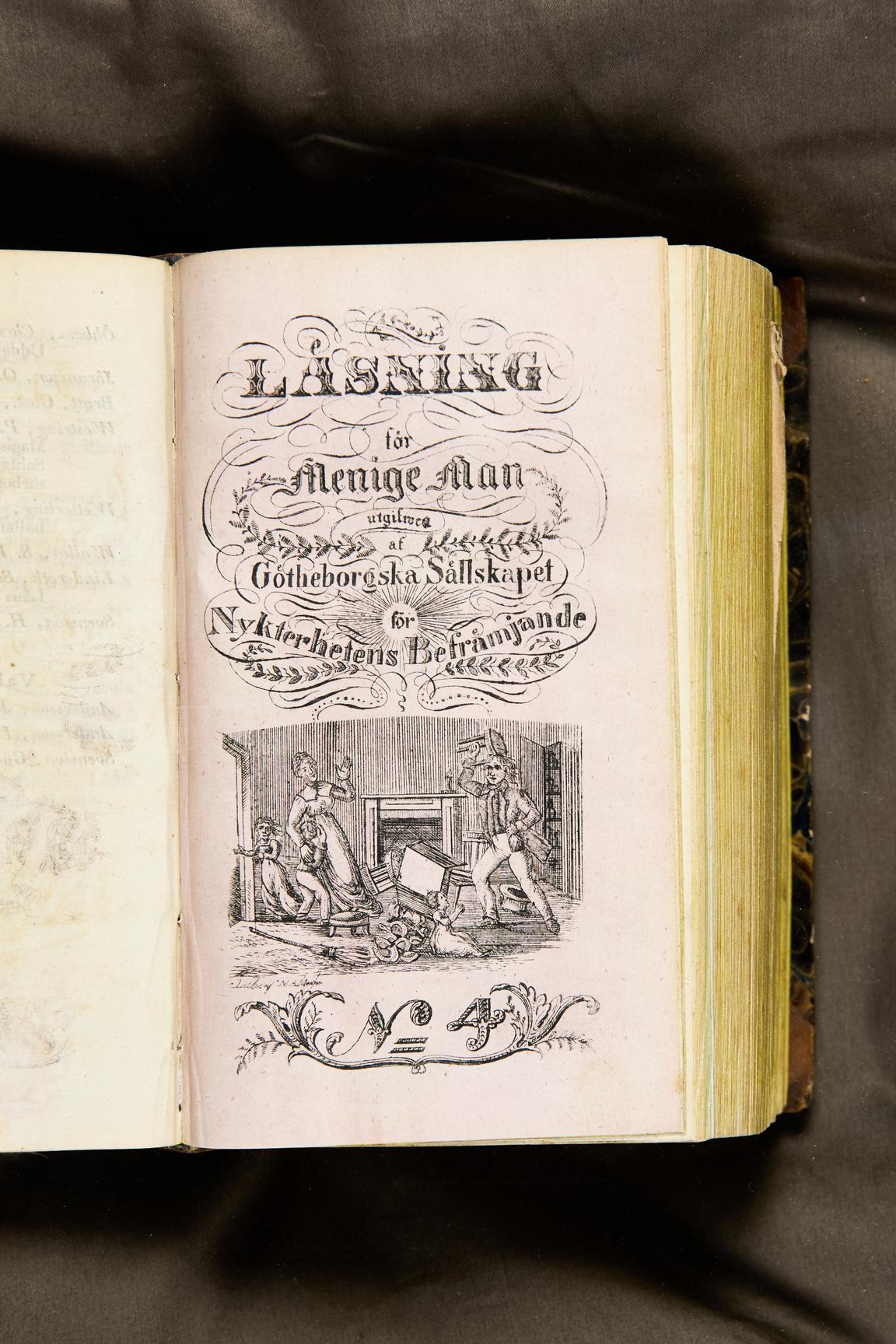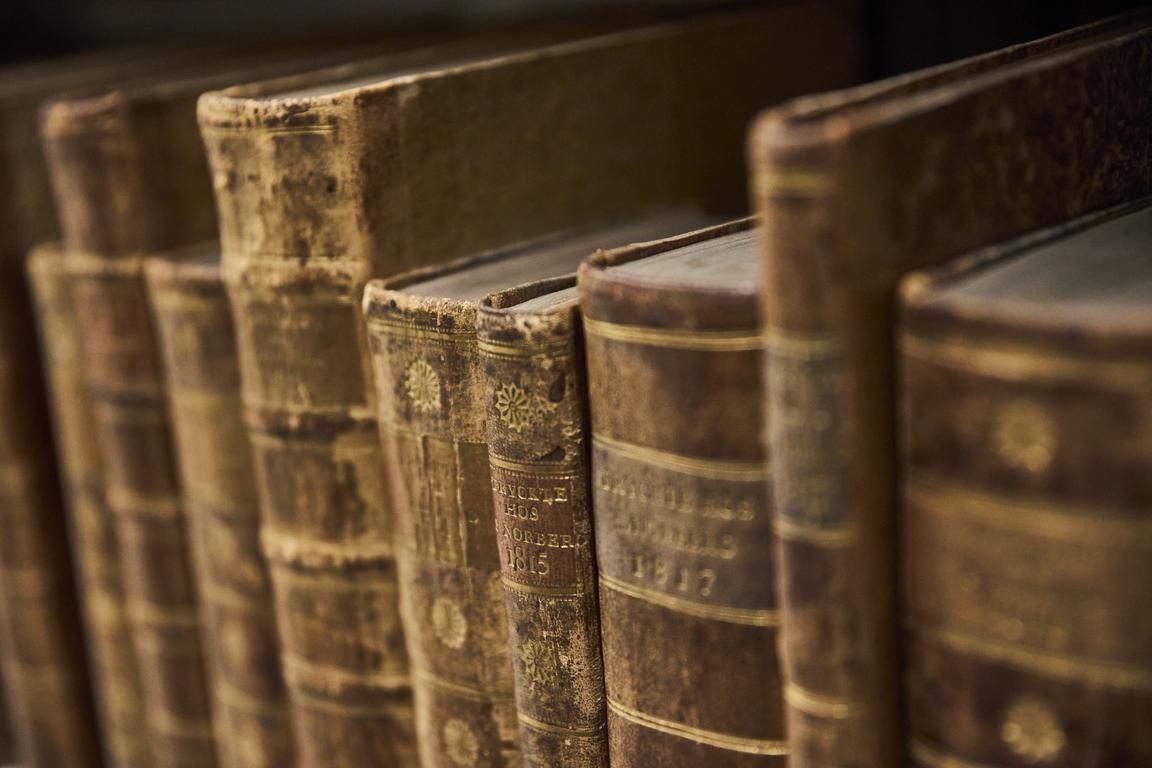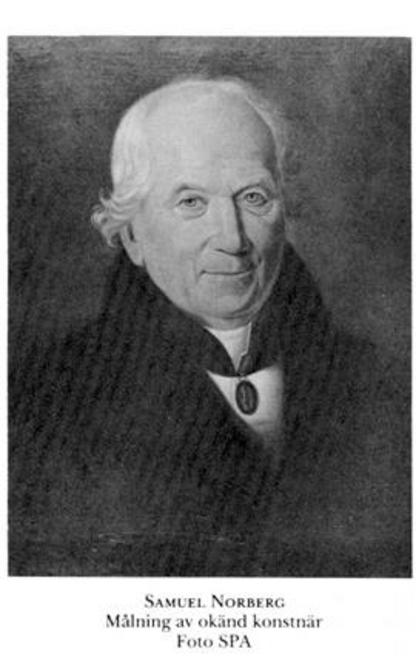Samuel Norberg Prints Collection
The material is particularly interesting as it is printed by the Norberg print shop in Gothenburg. It dates mainly to the early 19th century and includes a variety of topics.
About the collection
Samuel Norberg was a printer in Gothenburg. Consequently, the material is relevant both to book historians in general and to the West Swedish history of printing. The titles in the collection covers many years of print production from the business, but have nothing in common beyond their place of manufacture. They vary a great deal, and are mainly related to local activities.
Acquisition history
The collection originally comes from the library of the Hvitfeldtska Gymnasium. In at least one of the Norberg volumes is an acquisition number from 1929, indicating that the material came to the Gothenburg City library already before the Hvitfeldtska Collection was donated to the University library.



Access the collection
The collection is held in the closed stacks at the Humanities library. It is available for reading room use only.
Catalogue
The collection consists of small prints, which are not individually catalogued.
In Libris
In Supersearch
Inventories
Via Litteraturbanken
In Libris:
By title
By sequence
Humanities library
Renströmsgatan 4
405 30 GOTHENBURG
Phone: 031-786 17 45
Text:
Stefan Benjaminsson
Biography
Samuel Norberg was born in Västerås in 1752, and orphaned at 16. He came to Gothenburg as a young man, and was enrolled as a ship's scribe at the East India Company. As such, he made three journeys to Canton - present-day Guangzhou - in China, and later as quartermaster aboard the Finland, on the Terra Nova in 1775 and 1777 respectively, and as a purser, the officer responsible for administration and supplies, once more aboard the Finland in 1779. How Norberg came to be a printer is not known, but in 1782 he married a Miss Smitt, widow of the printer Matthias Peter Smitt. With this, Norberg also took over Smitt's printing business.
The print shop that Norberg acquired in Gothenburg is the same that was once established and run by the first printer of the city, Amund Grefwe. The enterprise has had several owners throughout the years separating Grefwe and Norberg. All in all, they have been: Amund Grefwe 1650–1677), Tideman Grefwe (1677–1679), Grefwe's widow (1679), Lars Lönbohm (1680–1685), Lönbohm's widow (1686), Jöns Rahm (1686 or 1687–1695 - in 1696–97 the print shop was called Sal. Rahms tryckeri), Zacharias Hageman (1697–1725), Johan Hageman (1725–1727), Johan Hageman's widow (1727–1730), Lars Unge (1730–1732), Lars Unge's widow (1732–1735), Immanuel Smitt (1735–1781), Matthias Peter Smitt (1781) and Samuel Norberg. After Norberg's death in 1843, Anders Weström continued to run the print shop as Norbergska tryckeriet until 1848, after which the enterprise lay dormant until 1855 when the print shop was sold in pieces to S. A. Hedlund. After this, the old Grewfe print shop ceased to exist. (We might ask ourselves whether the shop perhaps illustrated the old paradox of the Ship of Theseus: after such a long time, and with a majority of the material likely replaced through the years, how much of the original business really remained?)
Early on, Norberg earned much respect as a printer, illustrated not least by the fact that during the war on Denmark in 1788, King Gustaf III entrusted Norberg with the printing of the declaration against the Danish commander-in-chief. Norberg was also given permission from the King to print a letter that contained some rather harsh accusations against the parts of the Swedish Army then stationed in Finland. The production makes it clear that Norberg was active in the manufacturing of royalist propaganda.
In addition, Norberg was aided by his competitor Lars Wahlström, who allowed him the use of his founts and presses for the all-important newspaper issuing. Among other titles, Norberg published the Götheborgs Allehanda and Götheborgs Nyheter.
A fire destroyed the printing workshop in early 1792. At this time, Norberg had just finished printing a bible edition which was among the things lost in the fire, and with this, he considered himself ruined. To make ends meet, he sought employment as a ship's scribe at the East India Company, but was granted enough economic support to be able to continue as a printer.
Concerning the print production of Norberg, the theological literature made up a considerable portion. In this field, he was also active as a publisher. At the time of the fire he was, as mentioned above, busy making a large bible edition. The printing could eventually resume, and the endeavour became a great success, with an edition of 16 000 copies. According to Norberg himself, it was "likely the largest bible edition ever issued in our country". Apart from the 1794 bible edition, Norberg published another two, in 1800 and 1809.
Norberg's production of literary works, which was a lot less extensive, included among other titles a few novels by Walter Scott and one by Ann Radcliffe, a popular representative of "the Gothic novel". By Nikolai Karamzin, rarely translated in the 19th century, Norberg published Berättelser (1806). Swedish literature is represented in Norberg's body of work by a couple of Gothenburg authors. Items that proved economically successful for the print shop were folk songs and stories such as Puss in Boots. The estate inventory of the company stock mentions some 130 songs and about 30 "stories".
Among the more peculiar works published by Norberg is a dissertation by J. A. H. Reimarus on lightning conductors, the first text on the subject aimed at the public. Another interesting title is a book on "20th century Paris" by barrister P. Jouhaud, the translation of which was made on Norberg's own initiative. In 1823 Norberg published Sweden's first manual on printing, authored by C. G. Täubel and translated from German.
A cornerstone in Norberg's enterprise was the publication of newspapers. He issued two of the city's papers, Götheborgs Allehanda and Götheborgska Nyheter. As the printer for the gymnasium, he often took priority when it came to official publications for the consistory and the gymnasium. Among other things, he printed the Götheborgs stifts-tidningar, circulars for the consistory, theses for the pastoral degree, school yearbooks and public proclamations, which kept him consistently occupied. Following an agreement with the Society of Arts and Sciences (VVS), he printed their minutes from 1806 onwards.
In 1792, Norberg took over what was then the old Mölndal papermill, and in 1796 he assumed ownership of the Korndal works. His enterprise was concentrated to the latter. In addition, Norberg was an advocate of teaching matters, and built a school in Mölndal, along with other efforts. He also donated funds for teaching to the Geatish Society. In time, he was made a Knight of the Order of Vasa.
Samuel Norberg died in 1843.
Read more
Amund Grefwe - Den förste boktryckaren i Göteborg, red. Gösta Engström, Göteborgs universitetsbibliotek, 1983.
Göteborgs Typografiska Förening 1884-1934, en minnesskrift, ed. Nils Wessel, issued by GTF, Wald. Zachrissons Tryckeri, Göteborg 1935.
Göteborgs Boktryckareförening - en minnesskrift, issued by Göteborgs Boktryckareförening 1949
Folke Persson & Agne Rundqvist. Antologia Gothoburgensis, Rundqvists Boktryckeri, Göteborg, 1953.
Grefwes tryckeri - Göteborgs historia from Det Gamla Göteborg.
On Samuel Norberg in Svenskt Biografiskt Lexikon
On Samuel Norberg via Litteraturbanken
On Samuel Norberg on Wikipedia
Suggested research topics
- An overview of the collection's contents. What is represented here, and how does it mirror the time and context of the material?
- Biographical research
- Comparisons with other similar, conptemporary collections of prints.
- Older printing history in Gothenburg and West Sweden.
Please contact us if you have any suggested research topics you would like to share!